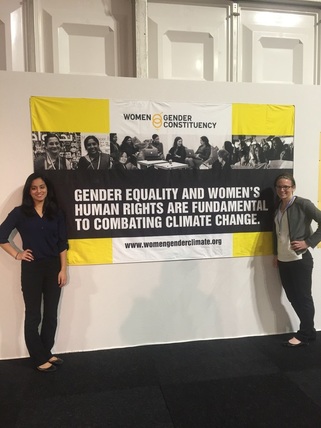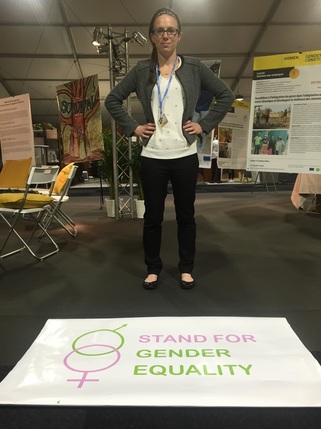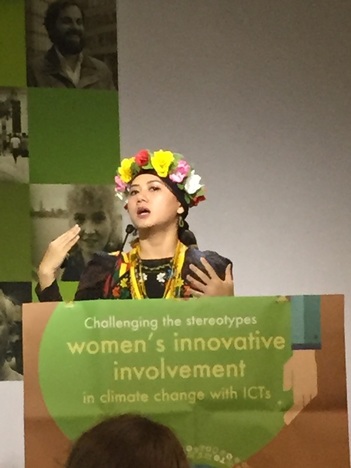|
Today was Gender Day at COP21. There were a multitude of speakers throughout the day discussing how to bridge the gender gap to create climate justice. Here is a brief summary of what we learned today! Why do we need to integrate gender into climate change mitigation and adaptation? Women are underrepresented in climate change and women’s capabilities are underestimated. Examples include:
What are some solutions?
Women across the globe are coming up with innovative ways to make their voices heard in order to both mitigate and adapt to climate change. Examples include:
For entertainment purposes: https://www.youtube.com/watch?v=TCBttS_y7lE
6 Comments
Zoe
9/12/2015 10:52:31 am
This is extremely interesting. I never thought about how gender roles could play a part in climate change especially in foreign nations. Here that isn't a problem so it doesn't even occur to us. Thanks for the information!
Reply
Shania VanOrsdale
9/12/2015 01:59:09 pm
I really appreciate the fact that aspects such as the indigenous women are being greatly considered during this conference! It's not just about the big cities and islands, but also about the lively hood of smaller groups of people. This is a thought I never would have had until reading this article. Just goes to show that changing one thing in this world can lead to the changing of so many other things!
Reply
Logan Aument
9/12/2015 03:55:15 pm
This is very interesting. I would have never guessed that gender has to do with climate change. I think it is important not just for one gender but everyone to know about the risks involved with climate change. Therefore it is important to get the smaller countries to allow all of its population to be well informed.
Reply
Kourtney Toomey
9/12/2015 11:49:05 pm
Reading this definitely made me take a whole new perspective on climate change. The idea of having everyone involved in the discussions pertaining to climate change is so important. The fact that women, especially of indigenous descent, are being included more in discussions now can only better the decisions that come from those discussions. This was a very interesting blog post.
Reply
Sarah Rodriguez
12/12/2015 04:44:12 pm
I checked out this post because I never thought about gender playing a role in climate change. Before reading this, I had no idea that women in other countries are so connected to the climate but have such little room to voice their opinions, which could not only help their villages but the world as well. These women are bright and I am happy to see that their involvement is becoming more and more widespread. I found it really neat that women in Taiwan are using mobile apps to help each other find healthy food after natural disasters hit (and continue to hit more frequently because of the climate). Keep rocking it ladies!
Reply
Wyatt Barnett
16/12/2015 11:34:04 am
I decided to read this post because I was interested in finding out how gender plays a role in climate change and how women's voices were not being heard. I thought the story of the women in Terai, Nepal having to climb over flood walls to access clean water was especially interesting. If the women would have been included in the decision to build the flood walls, the problems could have been avoided. This is just a small example of the large trend of women not having a voice in climate control.
Reply
Leave a Reply. |
Categories
All
Archives
March 2024
|



 RSS Feed
RSS Feed
